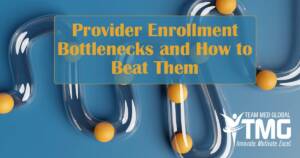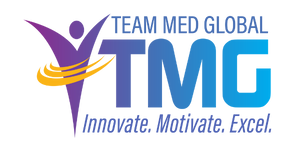 If you’ve worked in provider enrollment for more than five minutes, you already know: speed is everything but shortcuts come at a cost. The real challenge is moving faster and smarter. For seasoned Provider Lifecycle Professionals (PLPs), the goal isn’t just quick submissions. It’s clearing recurring provider enrollment bottlenecks that bog down even the most efficient teams.
If you’ve worked in provider enrollment for more than five minutes, you already know: speed is everything but shortcuts come at a cost. The real challenge is moving faster and smarter. For seasoned Provider Lifecycle Professionals (PLPs), the goal isn’t just quick submissions. It’s clearing recurring provider enrollment bottlenecks that bog down even the most efficient teams.
Here’s a look at common enrollment slowdowns and how high-performing PLPs solve them.
Bottleneck #1: Privileging Delays That Stall Enrollment
Some organizations wait for final privileges before starting enrollment. The result? Providers who are technically ready to work but stuck waiting for enrollment to catch up.
What high-performing PLPs do:
- Implement parallel processing: start enrollment once application is complete, even if privileges are still in review
- Flag dependencies clearly in the file so nothing gets submitted without required approvals
- Work with compliance to define what must be in place for safe overlap and document the rationale
Bottleneck #2: CAQH Confusion and Inconsistencies
Enrollment applications grind to a halt when CAQH profiles are outdated, incomplete, or don’t match NPPES data. Providers often don’t realize how minor discrepancies—like a missing degree or inactive address—trigger major delays.
What high-performing PLPs do:
- Use a standardized internal CAQH checklist tied to each payer’s validation criteria
- Build provider-facing guidance with screenshots to show exactly what and where to update
- Assign someone to pre-screen profiles weekly for red flags before payers catch them
Bottleneck #3: Back-and-Forth With Providers Over Missing Info
You send the form. They forget to sign. You resend. It’s missing a date. You resend. It’s the enrollment version of Groundhog Day and a huge time sink.
What high-performing PLPs do:
- Use conditional logic in digital forms to prevent incomplete submissions
- Create short videos or annotated templates that show providers how to complete key documents
- Assign one point of contact per provider to streamline communication and build rapport
Bottleneck #4: Payers That Drag Their Feet
Some payers take 30 days. Others take 90. Some lose your application entirely. Following up feels like a full-time job.
What high-performing PLPs do:
- Maintain a payer profile database with contact info, escalation paths, and historical turnaround times
- Set internal reminders for follow-up at 15-, 30-, and 45-day intervals
- Escalate early when timelines slip, and document every contact every time
Bottleneck #5: Poor Internal Communication
Enrollment timelines collapse when teams don’t know who’s doing what or when. You find out two weeks late that the provider changed locations or delayed their start date.
What high-performing PLPs do:
- Establish enrollment checkpoints in the onboarding process
- Join weekly cross-functional calls with credentialing, HR, and revenue cycle
- Use shared dashboards to track provider status and enrollment progress in real time
Enrollment Excellence Starts with System Awareness
Getting providers enrolled faster isn’t about rushing. It’s about anticipating provider enrollment bottlenecks, refining processes, and making sure no one’s stuck waiting on the next step. High-performing PLPs don’t just work harder; they build smarter systems.
At TMG, we know that real impact comes from insight, not urgency. Explore webinars and courses to help you elevate your enrollment workflow and your role.

